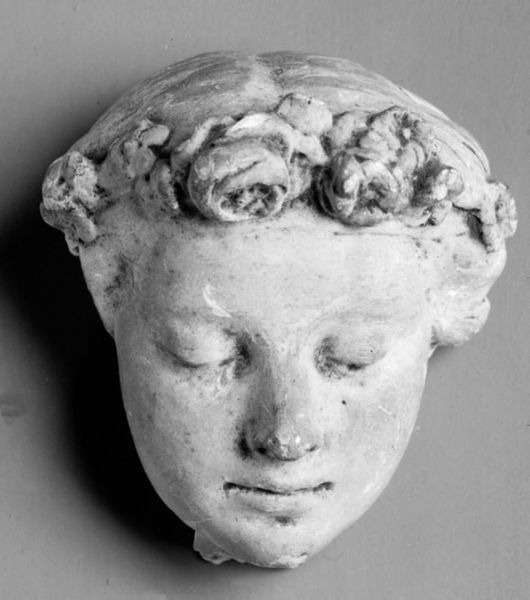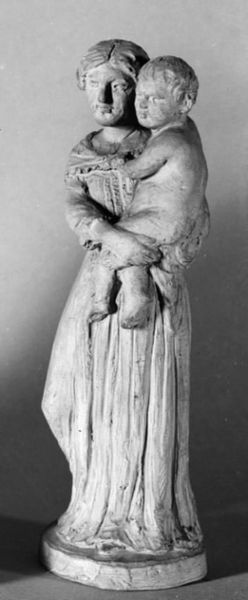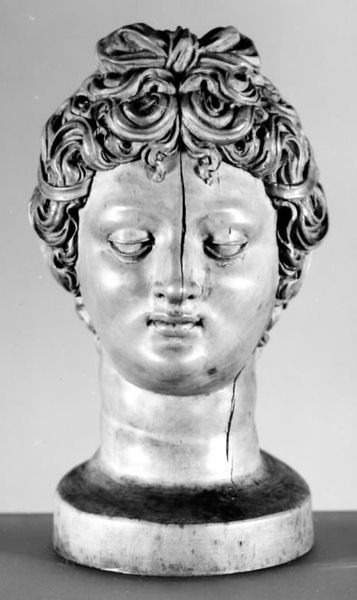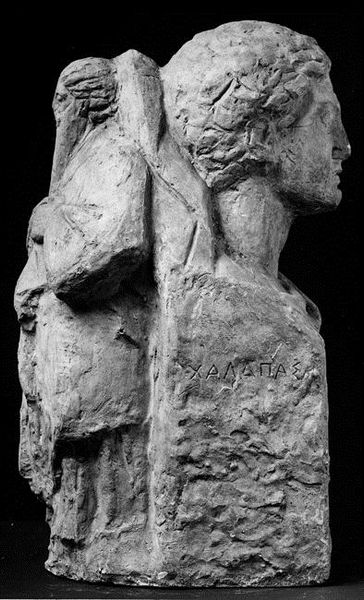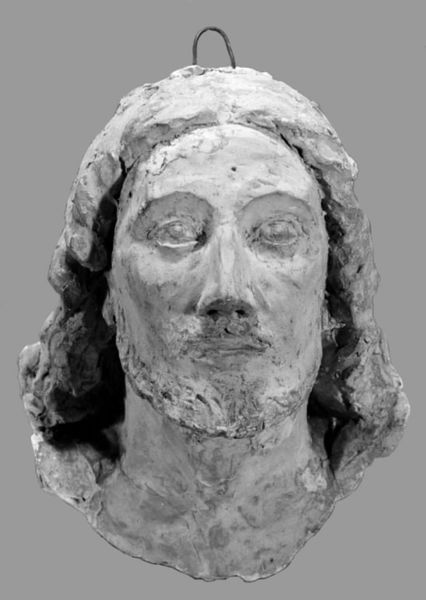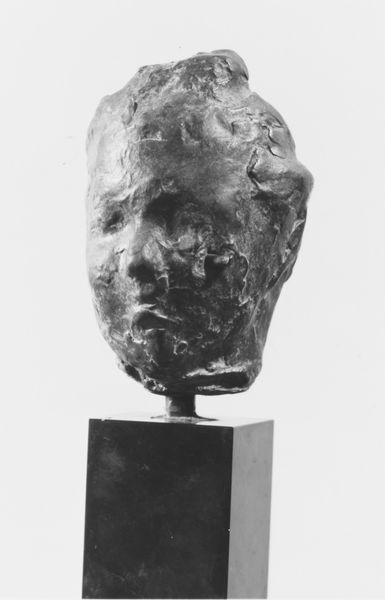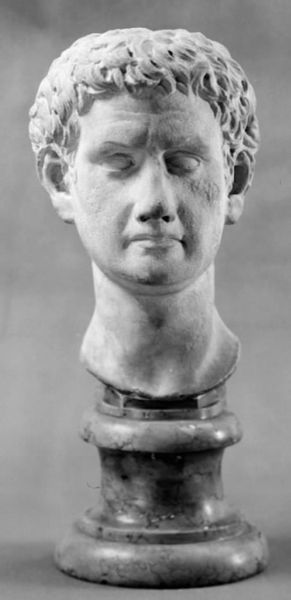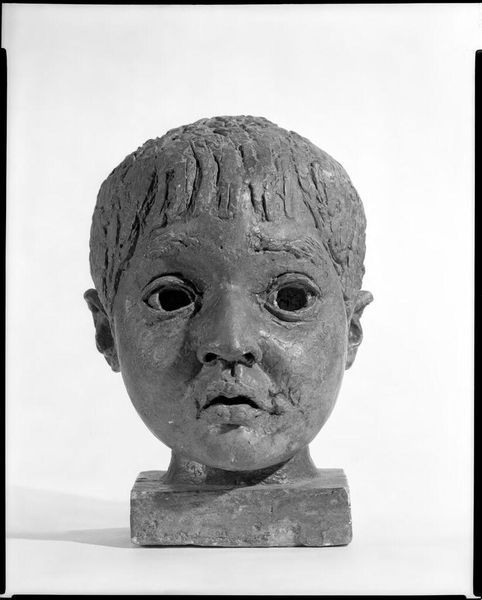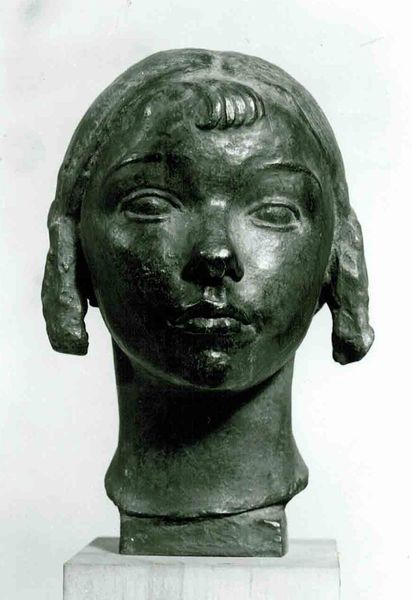
alabaster, sculpture
#
portrait
#
neoclacissism
#
sculpture
#
alabaster
#
sculpture
Dimensions: 5.8 cm (height) x 5.4 cm (width) (Netto)
Curator: Welcome. Today, we're examining "Loke's Face" by Hermann Ernst Freund, created sometime between 1801 and 1840. It’s currently held at the SMK, the National Gallery of Denmark. Editor: It's... fragmented. Gives the immediate impression of something incomplete, a relic or broken mask. The stark whiteness adds to that feeling. Curator: Precisely. This piece exists within a historical context of Neoclassicism, a period marked by the revival of classical art and thought. The face, rendered in alabaster, represents the Norse god Loki. Editor: Ah, alabaster. That explains the coldness. Its inherent qualities impact the visual language, you know. The translucence suggests a haunting spirit, which feels fitting for someone with Loke's trickster energy. Was this commissioned, do we know who was the main target? Curator: The commission itself is tied into a broader movement of Scandinavianism—a 19th-century phenomenon devoted to the shared history and culture of the Nordic countries, that swept all classes from upper to lower. Editor: So, a tangible product of that movement's efforts at forging national identity and cultural heritage. Tell me about the artist's hand, about Freund's process here. Curator: Freund was heavily involved with the artistic circles in Rome. He studied classical sculpture intensely. It is not just a face, is part of the cultural landscape where myth and politics blended seamlessly. The work tries to elevate national folklore to high art. Editor: I wonder, however, about that friction - how does the material, and how his studio shaped this thing is something else- against this very elite, neoclassical obsession with "beauty," especially given the working class and popular elements of Scandinavianism? How did people consume that image. Curator: That’s an important tension to consider. Freund navigated this very well because his rendering softens Loki, rendering him sympathetic rather than menacing. It's also worth noting the sculptural qualities—the texture and the slight imperfections left intentionally. Editor: Intentionally leaving roughness on a polished surface, right. Perhaps an artist, confronting how to produce it at the time to achieve a "true" feeling. The means by which art objects get this level of complexity always interests me! Curator: Precisely. We have both uncovered layers of meaning and manufacture, haven’t we? Editor: Indeed! Always good to keep in mind, that everything, even a god's face in stone, is also touched by hands.
Comments
No comments
Be the first to comment and join the conversation on the ultimate creative platform.
